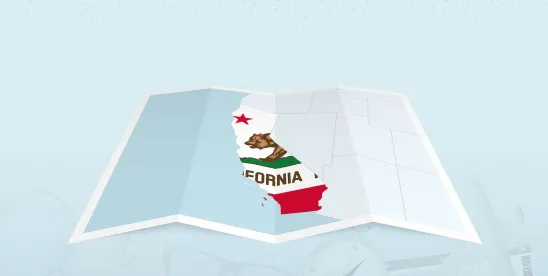In the summer of 2024, the State Assembly Select Committee on Permitting Reform began convening public hearings, interviews, and forums to understand how to reform land use permitting to address California’s ongoing “housing crisis and climate crisis.” This effort culminated in two parts: on March 4, 2025 the Select Committee released its Final Report on Permitting Reform, and on March 27, legislators operationalized the Final Report’s recommendations in a sweeping “Fast Track Housing package” of over 20 bills intended to make housing “more affordable by slashing red tape, removing uncertainty, and drastically diminishing the time it takes to get new housing approved and built.” We separately review these bills here.
The Final Report itself does not propose specific legislation. Instead, it reiterates that California needs to build more housing, renewable energy facilities, and climate-resilient infrastructure “at an unprecedented scale” to achieve its climate and housing goals. And to do so, the Final Report explains that California must transform its permitting processes from “time-consuming, opaque, confusing” endeavors into “timely, transparent, consistent, and outcome-oriented” sequences.
The Final Report unpacks four areas of permitting that underpin the housing and climate crises: Housing, Electricity, Water, and Transportation. Key recommendations for each topic are summarized below.
HOUSING
The Final Report lists five recommendations to improve permitting for housing development projects:
- Eliminate uncertainty in the application process.
- Minimize uncertainty in the entitlement process.
- Create more consistency across permitting entities.
- Focus CEQA review of housing developments on addressing potential environmental harms (versus nonenvironmental concerns often raised by project opponents).
- Minimize uncertainty for post-entitlement permits.
Echoing the Final Report’s overarching themes, these recommendations focus on increasing certainty for housing developers throughout the permitting process. Stakeholders testifying about permitting challenges emphasized the need for clear, predictable local permitting requirements and decreased permitting timelines.
Regarding CEQA, the Final Report explains that “CEQA has proven highly susceptible to being leveraged to prevent development of projects for nonenvironmental reasons, such as dislike of development by those living near the proposed project, desire to lock in labor agreements by labor unions, desire for community benefits by community groups, and as a way for businesses to hurt their competitors. To facilitate the best environmental outcomes, and facilitate necessary projects, the environmental review of projects must be focused on those aspects of the project that are potentially harmful to the environment.”
ELECTRICITY
The Final Report identifies five opportunities to improve permitting for electrical infrastructure projects:
- Improve implementation of Assembly Bill (AB) 205 (which allows the California Energy Commission, rather than a local agency, to permit a clean energy project).
- Facilitate conversion of fallowed agricultural land to clean energy purposes.
- Minimize unnecessary restrictions on battery storage.
- Reduce barriers to reconductoring.
- Facilitate alignment between local, state, and federal agencies.
Emphasizing the need to “deploy new electricity infrastructure at a scale and speed never before seen,” these recommendations focus on removing unnecessary or redundant barriers to constructing new energy facilities. As one stakeholder put it: “Meeting [California’s clean energy goals] is literally a moonshot. It requires a total of 70 gigawatts of utility-scale solar, 48 gigawatts of utility-scale battery storage by 2045 by the state’s own projections. And to succeed, we have to figure out how to build, on average, three times more than the fastest year we’ve ever built before.”
WATER
The Final Report identifies three opportunities to improve permitting for water storage, conveyance, and flood control projects:
- Eliminating uncertainty in the application process.
- Enhancing interagency coordination and consistency.
- Creating distinct permitting pathways for drought resilience and flood risk reduction projects.
Stakeholders testifying about the challenges of permitting water infrastructure projects emphasized that long, complex, and multi-jurisdictional permitting processes can compound rather than surmount the urgent need to increase water capture and protect other critical infrastructure.
TRANSPORTATION
The Final Report notes that the transportation sector is California’s largest producer of greenhouse gas emissions and identifies three opportunities to improve permitting for transportation projects:
- Increase consistency across local permitting entities.
- Remove inefficiencies in repeat engagements.
- Create distinct permitting pathways for important transit projects.
According to the Final Report, shifting trips from personal vehicles to alternative modes of transportation is an essential step in reducing greenhouse gases from California’s transportation sector. However, such projects often require approvals from multiple agencies, and that process is not always coordinated or consistent. Stakeholders testifying about these challenges recommended that the state legislature require local and state agencies to standardize the permitting process for transit projects.
IMPLEMENTING THE FINAL REPORT’S RECOMMENDATIONS
Legislators have sought to promptly implement the Final Report’s recommendations. The “Fast Track Housing package” unveiled on March 27 is based on the Final Report and includes over 20 bills aimed at reducing housing production delays. According to Assemblymember Buffy Wicks, who chaired the Select Committee on Permitting Reform, “The Fast Track Housing package is about making our systems work better: clearer rules, faster timelines, and fewer bureaucratic hoops.” Our full analysis of the new bills is available here.




 />i
/>i
